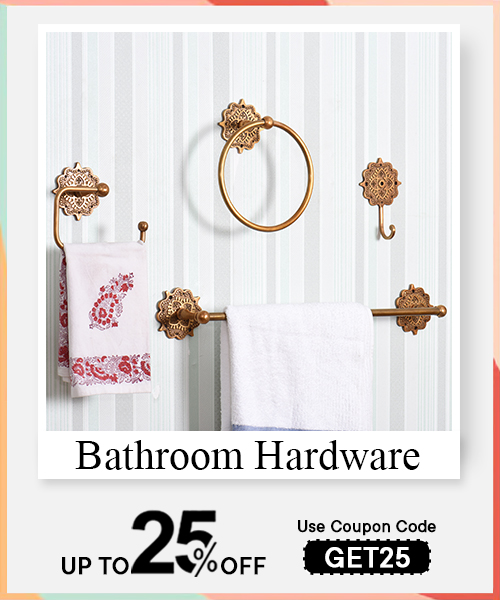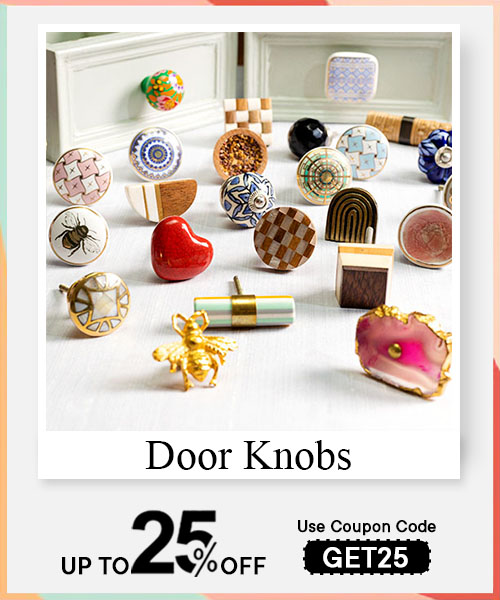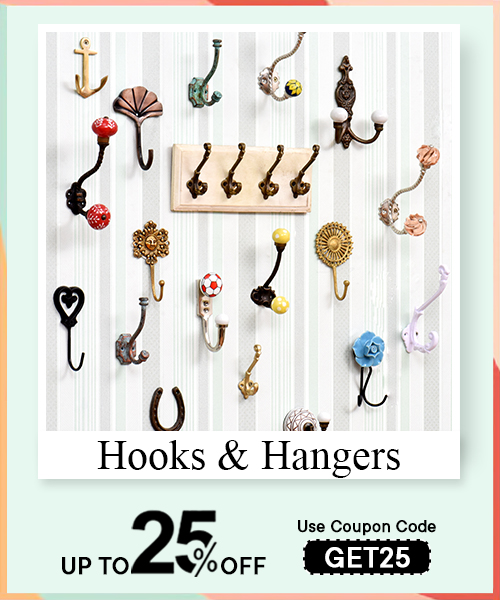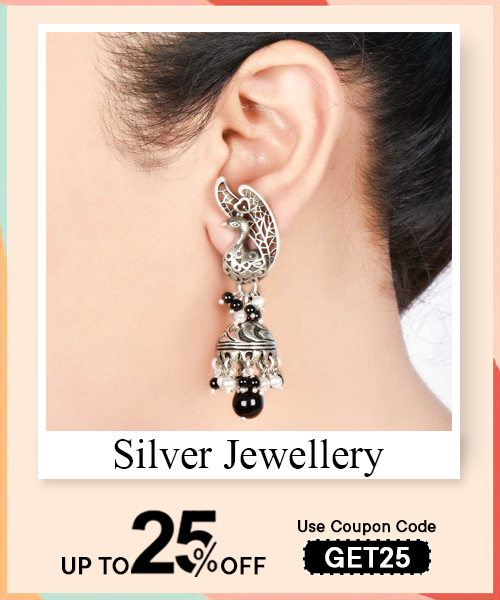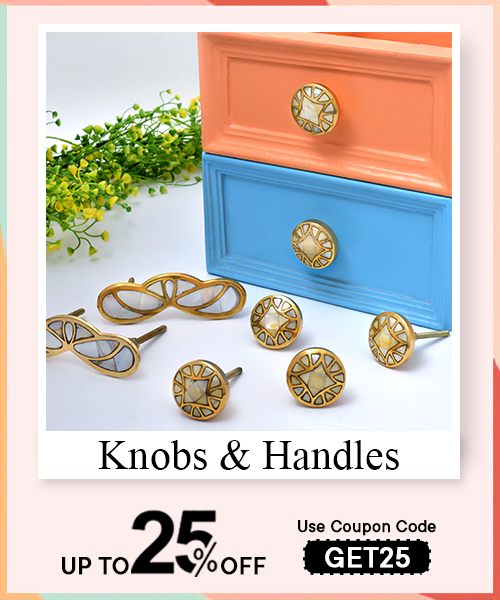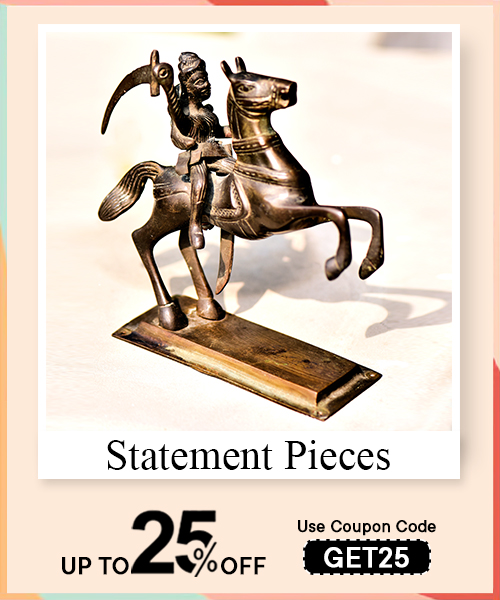Vintage jhumkas transcend trends, etched in time like heirlooms passed from one generation to the next. Their beauty lies not in flamboyance, but in the quiet stories they whisper. With their bell-shaped silhouette and the soft chime they carry, they aren’t just accessories, they are echoes of heritage. Each curve, each dome, each stud tells a tale of rituals, weddings, temple processions, and festive grandeur. They embody the feminine, the rooted, the regal. Timeless because they are not reinvented, they are remembered, revered. They do not follow fashion, they carry the weight of legacy and the lightness of tradition all at once.
Vintage jhumkas are timeless due to their deep cultural grounding and symbolic intricacy. Unlike contemporary designs that often chase seasonal appeal, vintage jhumkas retain relevance by mirroring history, whether it’s in temple architecture inspired motifs or the meticulous meenakari embedded in their core. Their circular, chandelier-like drop structure mimics ancient earrings seen in sculptures and frescoes, establishing continuity with Indian aesthetics. The emotional resonance is also vital, women often inherit these from mothers or grandmothers, adding layers of personal memory to already culturally rich pieces. Timelessness is achieved when emotion and design marry seamlessly, and vintage jhumkas do just that.
The soul of a vintage jhumka lies in the hands that shape it. The jhumka is not just forged, it is sculpted. Indian artisans pour centuries of inherited skill into every curve. Whether it’s the delicate filigree work from Odisha, the glinting kundan setting from Rajasthan, or the vivid meenakari from Varanasi, each technique breathes its own story. Hand-beaten patterns, oxidized polish, granulation, repoussé, no shortcut defines its creation. It’s the patience of handcraft, the meditative detail, the artisanal imperfections that make each piece distinct. The process isn’t just skilled, it’s sacred.
Vintage jhumkas are handcrafted through time-intensive processes that involve layering, soldering, and hand-carving. The base is often shaped using repoussé, a metalworking technique where artisans hammer the reverse side to raise the front. Filigree work, characterized by lace-like silver or gold wires, is woven into the dome for intricate texture. Gemstones like uncut diamonds, pearls, or colored glass are embedded using traditional kundan or jadau techniques, fixed without claws or modern prongs. Finishing touches include enameling (meenakari) or oxidization to create a vintage patina. Every piece is touched dozens of times, not by machines, but by memories passed through hands.
Antique jhumkas are defined by their use of precious and semi-precious materials, gold, silver, pearls, glass stones, and sometimes even brass or copper alloys. The techniques are older than the design itself. Meenakari adds color, kundan brings stone-setting tradition, while granulation (tiny gold balls soldered onto the surface) and chasing give the jhumka its ornate relief. Unlike modern cast-mould earrings, antique jhumkas are hand-assembled in parts, top stud, connecting bell, and dangling beads, all held together with soldered joints. The structure is deliberately tiered to allow movement and sound, because in tradition, even silence has a rhythm.
Read More : What Is In and What Is Out of Style: The Most Popular Jewelry Trends
Each vintage jhumka tells you where it comes from before it tells you what it is. A temple jhumka from Tamil Nadu resembles miniature sanctums, often engraved with Lakshmi motifs and worn by Bharatanatyam dancers. Mughal-style jhumkas, on the other hand, are dreamy, laden with pearls, floral carvings, and dome-shaped opulence, inspired by courtly grace. In contrast, South Indian bridal jhumkas balance gold weight and spiritual iconography, designed to be blessings, not just adornments. These styles are more than regional, they are ritualistic, aesthetic declarations that have been worn for centuries across ceremonies and celebrations.
Vintage jhumkas come in a variety of traditional styles, each rooted in cultural identity. Temple jhumkas are often large, gold-toned, and carved with deities or lotus motifs, worn during religious ceremonies. Mughal jhumkas showcase Indo-Islamic fusion with teardrop domes, enamel work, and pearl fringes. Rajputana-style jhumkas integrate meenakari on the reverse with gemstone clusters in front. Karnataka’s Kasina jhumkas are crafted with coin motifs, while Kashmiri jhumkas lean on uncut stones and fine silver filigree. These styles reflect not only artistic technique but also the wearer’s social, spiritual, and familial roots. Each jhumka is a visual dialect of its geography.
Vintage jhumka designs are inspired by cultural regions such as Tamil Nadu, Andhra Pradesh, Rajasthan, Uttar Pradesh, and Kashmir. In Tamil Nadu, temple architecture plays a direct role in influencing jhumkas, both in form and iconography. Rajasthan brings flamboyance through kundan, jadau, and meenakari, rooted in royal legacy. Uttar Pradesh offers Mughal flair, mild curvature, mirror symmetry, and enamel-toned domes. Kashmir contributes silver filigree and earthy restraint, while Kerala designs incorporate green stones and conch-shell motifs. These regions don’t just influence the aesthetic, they shape the narrative and emotion each jhumka evokes.
In the grand tapestry of style, vintage jhumkas gleam like fine brushstrokes on a minimalist canvas, bold, deliberate, and emotionally resonant. Pairing these intricate domes of heritage with contemporary outfits is akin to juxtaposing Rajasthani miniature art with Bauhaus, daring, yet seamless. A flowy pastel gown, layered with oxidised silver jhumkas, doesn’t just break rules, it composes new music. When worn with linen jumpsuits or cotton co-ords, jhumkas become statement brushstrokes, filling cultural absences with textured memory. Fusion fashion breathes life into both, the contemporary form and the ancestral embellishment. These earrings do not beg for occasion; they command presence. Like the focal subject of a mural, they anchor the look, creating a narrative bridge between the past and now, feminine, fierce, fluid.
Absolutely. Vintage jhumkas transcend eras and are remarkably adaptive, like gold leaf detailing that elevates a contemporary painting. When paired with modern dresses, be it a structured blazer dress, a ruffled organza piece, or a monochrome slip dress, these earrings serve as cultural punctuation marks. They ground the ensemble in history while allowing it to leap forward. Think of jhumkas as living artifacts; their curved domes, filigree work, and ghunghroo accents carry the richness of temple architecture, now echoed against the clean geometry of contemporary attire. The clash is beautiful, deliberate, like cubism meeting Mughal frescoes. These pairings work best when the dress is restrained in embellishment, allowing the jhumkas to hold court. Add kohl-rimmed eyes or a single braid, and you have a wearable poem, bold, rooted, and unmistakably yours.
Vintage jhumkas are versatile, much like layered oil on canvas that shifts with light. While weddings and festivals remain obvious choices, given their symbolic richness and reverence, they are also unexpectedly stunning at indie concerts, poetry readings, gallery openings, or an intimate brunch in a linen sari or shirt-dress. The key lies in intention, not occasion. In bridal fashion, they complete a look with heirloom grace; in casual affairs, they stand as subtle rebellion, a refusal to forget one’s roots. When the world moves toward muted statements, a vintage jhumka reminds us of handcrafted boldness. Be it oxidised silver for a mehendi ceremony or a golden filigree for a cocktail soirée, each jhumka style evokes emotion, like the way colour theory works in abstract expressionism.
Vintage jhumkas, like oil paintings, are sensitive to touch, air, and care. To retain their original sheen and detailing, the granules of craftsmanship etched over decades, one must treat them with reverence. Start with gentle cleaning: use a soft cloth and a silver polish with anti-tarnish properties. Harsh detergents are to jhumkas what sunlight is to ancient frescoes, corrosive. Always store them separately in muslin or velvet-lined pouches to prevent friction. Layer with silica gel to keep moisture away, and avoid contact with perfumes or sprays. These earrings, crafted in delicate repoussé or meenakari, are not just ornaments, they are archival pieces. Handle with gloves, like a curator with a prized canvas.
Maintaining the original luster of vintage jhumkas is an art of mindful rituals. First, clean them periodically with a soft-bristle brush and diluted ammonia-free silver polish, just as one would gently restore a fading painting without disturbing the pigment. If the jhumkas include pearls or colored stones, ensure that water or solution never seeps into those crevices. After each wear, gently wipe them with a clean, dry cloth to remove oil residue, the way you’d remove dust from the glass covering of a framed art piece. Air is both a friend and foe; a few hours of airing out followed by moisture-free storage is ideal. Remember, these pieces often contain delicate jaali work or kundan settings that can loosen if mishandled. Regular care is not just maintenance, it’s a form of respect toward craftsmanship and the cultural history embedded in metal.

Storage is preservation. Delicate jhumkas demand isolation and cushioning, much like museum archives protect ancient canvases. Use individual pouches made of soft cotton or felt, and avoid plastic wraps, which can trap moisture. Layer your storage boxes with anti-tarnish paper or velvet-lined trays. Never hang them on hooks; the weight can distort their stem, especially for jhumkas with layered ghunghroos or pearl droplets. Store them flat, ideally with small compartments separating each pair, like panels in a triptych. Avoid crowding, jhumkas need room to breathe. If possible, dedicate a jewellery chest with temperature control, away from direct sunlight or excessive humidity. These are not just ornaments, they are heirlooms in waiting.
True vintage jhumkas have a weight of history, both metaphorically and literally. When shopping, look for craftsmanship that speaks of time: intricate detailing in the jali, tiny hammer marks in repoussé work, or slight asymmetry that hints at hand-made authenticity. Hallmarks, though important, are not the only proof. Provenance matters, shop from reputed antique jewellery stores, or trusted Indian jewellery dealers with a clear restoration policy. Avoid machine-made replicas that mimic surface design but lack soul. Examine the lock mechanism; vintage pieces often have screw locks or unique hooks, unlike the mass-produced fish hooks. Hold it in your hand, if it feels like poetry, weighty and whispering, it’s probably real.
Identifying authentic vintage jhumkas is akin to discerning original brushwork in an old painting, it lies in the detailing, patina, and structure. Look for signs of aging, a muted tarnish that speaks of time rather than artificial dulling. True vintage jhumkas often exhibit uneven textures, hand-soldered joints, and slight imperfections that signal handcrafting. The designs are historically rooted, floral motifs from Mughal miniatures, temple bells, or granulated patterns from tribal Gujarat. Check for hallmarks if they're made of precious metals, and confirm the origin and age through the seller. Demand transparency in sourcing. Most importantly, trust your tactile senses, vintage jhumkas feel different. They don’t glitter, they glow.
When buying antique earrings, be an art critic, observe, question, compare. Start by inspecting the craftsmanship. Are the motifs consistent with traditional art forms? Do they mirror the narrative of temple sculpture or folk iconography? Next, examine the materials: old silver, gold, or copper alloys often have a distinct, oxidised patina. Seek pieces with intact detailing, kundan work, meenakari, or hand-beaten textures. Verify the presence of hallmarking or age certification if possible. Buy from trusted sources, antique fairs, curated online platforms, or reputed old-town jewellers. And always ask for restoration history. A good antique piece will feel like a character from a period film, layered, lived-in, and unforgettable.
In the realm of Indian fashion, celebrities are not just style icons, they are walking galleries of heritage. From Rekha’s Kanjeevaram-clad elegance crowned with temple jhumkas to Deepika Padukone’s bridal lehenga enhanced by kundan chandbaalis, these earrings have often stolen the spotlight. Even modern stylists integrate vintage jhumkas with power suits or capes, blending bridal fashion with everyday drama. Think Sonam Kapoor’s oxidised pair at Cannes, or Alia Bhatt’s soft chikankari paired with antique gold jhumkas, each look curated like a stage composition. These choices are not trend but testament, to tradition’s theatrical beauty and Bollywood’s enduring love for ornamented nostalgia.
Many Bollywood actresses have elevated vintage jhumkas to icon status. Rekha is perhaps the most enduring muse, often seen draped in silk sarees with South Indian-style gold jhumkas that echo temple architecture. Deepika Padukone has consistently embraced vintage aesthetics in her wedding looks and traditional appearances, particularly heavy kundan or pearl-encrusted domes. Sonam Kapoor, a known fashion experimenter, has flaunted antique silver and oxidised jhumkas with contemporary Indian and Western wear, adding layers to her Indo-western appeal. Vidya Balan too has turned jhumkas into a personal style statement, usually pairing earthy textiles with vintage-inspired earrings. Each look they wear is less about accessorising and more about identity, like picking the perfect frame for a Renaissance painting.
Stylists today approach bridal fashion like a mixed media artwork, blending textures, traditions, and silhouettes. Vintage jhumkas are often used to soften or elevate bridal ensembles, paired with minimal makeup for balance, or layered with a nath or maang tikka to build regal drama. Contemporary brides may wear structured lehengas or saree-gowns, but the addition of antique jhumkas brings in cultural grounding. Stylists might intentionally mismatch sets, using jhumkas with choker necklaces or draped dupattas for an eclectic, editorial feel. The result? A bridal look that feels both cinematic and soul-stirring. These earrings are not just adornments, they’re legacy markers, worn like blessings passed down in gold and silver.
Read More : Office Wear Fashion Jewelry Trend For Every Women
Vintage jhumkas are more than decorative adornments. They are emotional relics, holding echoes of ceremonies, festivals, and ancestral bonds. Their continued relevance across generations lies in their narrative value. Passed down like a family’s most beloved painting, they absorb the essence of those who once wore them. The worn patina, the imperfect goldwork, the minute cracks in the enamel, these are not blemishes, but brushstrokes of life. The jingle of a jhumka on a grandmother’s ear or the glint of a dangling bell in a sepia-toned wedding photo is not just about nostalgia. It is about preserving intimacy and continuity in a fast-changing world. These earrings become rituals in themselves, revisited, remembered, revered.
Vintage jhumkas are passed down because they are containers of identity. Just like a family’s treasured oil painting might hang in different homes across eras, these earrings shift between generations as keepers of memory. They hold emotional value, the kind that cannot be cast, melted, or measured in karats. They are worn during rites of passage, festivals, and first public appearances. With every hand they pass through, they gather more meaning. The rituals may change but the jhumka remains a constant, linking the past to the present. The artistry involved, whether temple-inspired carvings or Mughal-influenced filigree, represents periods in cultural time. They are not passed on just to be worn, but to be cherished, understood, and eventually shared again.
Their true value lies in the invisible layers they carry. Beyond price, vintage jhumkas are repositories of craftsmanship, emotion, and history. Like the faded signature on an old miniature painting, the karigar’s touch is still present, even if unnamed. The unique techniques used, repoussé, meenakari, kundan setting, often belong to dying arts that are no longer replicated in modern jewellery. This makes each jhumka not just rare, but irreplaceable. Moreover, they embody memories. A daughter may wear her mother’s wedding jhumkas on her own special day, not just for tradition, but for connection. Their sentimental layering is what makes them timeless. You do not just wear them, you become part of their ongoing story.
Styling jhumkas with precision is akin to choosing the right frame for a painting. The face is the canvas and the jhumka, the focal detail. Not every jhumka flatters every shape. The success lies in harmony, matching the lines of the ornament with the contours of the face. Likewise, hairstyles act as complementary textures or background washes that bring out or mute the vibrance of the piece. A well-balanced pairing elevates not just the look but the emotional architecture of the ensemble. Just as an artist composes foreground and background to guide the viewer’s eye, the right jhumka and hair combination frames the wearer in visual poetry.
Every face shape has its own geometry, and jhumkas must act like accent strokes that enhance, not compete. Round faces benefit from elongated or tiered jhumkas that add length and reduce circular density. These designs create the visual illusion of a stretched vertical frame, adding grace and movement. Oval faces are considered balanced canvases and can carry most styles. Wider dome-shaped jhumkas or chaandbalis complement their symmetry beautifully without overwhelming. Heart-shaped faces, on the other hand, need grounding elements. Wider-bottomed or bell-shaped jhumkas balance the sharpness of a pointed chin by drawing the eye downward. These thoughtful placements bring cohesion, as if every detail is placed with painterly intention.
Hair, when styled with intent, becomes an extension of the jewellery’s narrative. Structured hairstyles, like low buns, centre-parted braids, or pinned curls, offer the clean negative space necessary for vintage jhumkas to shine. These classic styles serve as quiet backgrounds, allowing the intricacy of the earring to command attention. For more fluidity, soft waves or side-swept curls add an old-world romanticism, echoing the natural flow of traditional attire. Avoid overly voluminous or modern textured hairstyles, which can clash with the ornamental density of heritage jhumkas. Just like in visual art, when background and subject are at war, the composition suffers. The best looks are those where hair frames the jewellery, never fights it.
A capsule jewellery collection is like curating a series of masterworks, only a few pieces, but each one chosen with care, precision, and emotional depth. Vintage jhumkas, when approached this way, become signature accents rather than excess. You do not need quantity, you need intentionality. Each piece should serve a distinct mood or occasion, like a painter’s carefully selected palette. Whether for daily grace, ritual elegance, or statement power, jhumkas in a capsule set embody timelessness. Their wearability lies not just in design but in how they resonate across time, like recurring motifs in a series, reinterpreted with each wear, but always grounded in meaning.
A well-rounded capsule collection needs no more than three to five pairs of jhumkas. Each pair should hold its place like a chapter in a visual diary. One gold-finished pair with temple design for ceremonial days. One kundan or meenakari jhumka for festive settings or weddings. One oxidised or antique silver piece for everyday statements. Perhaps one modern reimagination in mixed metals or glass enamel for creative flair. And one bold vintage piece, dramatic in scale and story, for moments that demand presence. Each of these should echo not just versatility but intentional storytelling. You are not collecting, you are composing a wearable anthology.
Read More : Guide for Building Your Fashion Jewelry Collection
Versatility lies in design minimalism balanced with detail, pieces that do not scream for attention but hold it effortlessly. Gold-tone jhumkas with subtle temple motifs or filigree are adaptable across traditional events, from pujas to engagements. Oxidised silver pairs blend seamlessly with cottons, linens, and silks, adding a quiet edge to both day and evening looks. Kundan-set jhumkas with soft pastel enamelling transition beautifully from bridal functions to festive family dinners. Avoid overly trend-based designs. Think of timelessness as a muted colour palette in a painting, it allows mood, background, and emotion to rise without conflict. Your most versatile jhumkas are those that wear memory lightly and adapt with grace.










